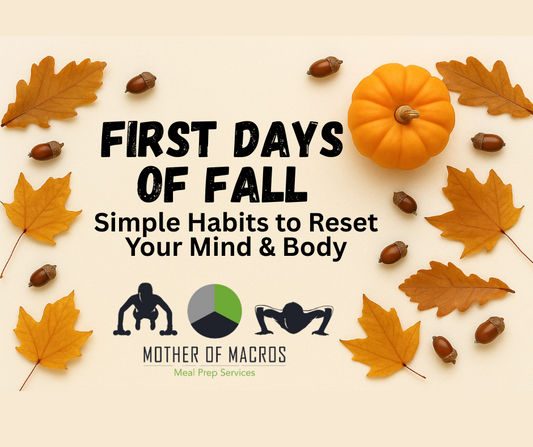A Beginner's Guide to Macros: What They Are and How to Calculate Them
When it comes to achieving your health and fitness goals, understanding macros is a game changer. Whether you want to lose weight, build muscle, or maintain a healthy lifestyle, counting macros can help you tailor your diet to fit your needs. Here's everything you need to know to get started.
What Are Macros?
Macros, short for macronutrients, are the nutrients your body needs in large amounts to function properly. They provide energy (calories) and play essential roles in your overall health. There are three main macronutrients:
-
Proteins: Build and repair tissues, including muscles. Each gram provides 4 calories.
- Examples: Chicken, fish, eggs, tofu, lentils
-
Carbohydrates: Your body's primary energy source. Each gram provides 4 calories.
- Examples: Rice, bread, fruits, vegetables, pasta
-
Fats: Provide energy and support cell function. Each gram provides 9 calories.
- Examples: Avocado, nuts, seeds, olive oil, butter
Why Count Macros?
Counting macros allows you to focus on the quality and quantity of your food intake. Instead of simply counting calories, you’re ensuring your body gets the right balance of nutrients to support your goals. It’s a more flexible and sustainable approach to eating compared to restrictive diets.
How to Calculate Your Macros
Step 1: Determine Your Caloric Needs Start by calculating your Total Daily Energy Expenditure (TDEE), which estimates how many calories you burn in a day. Use an online TDEE calculator or this formula:
-
Calculate your Basal Metabolic Rate (BMR) using the Mifflin-St Jeor equation:
- For Women: BMR = (10 × weight in kg) + (6.25 × height in cm) - (5 × age) - 161
- For Men: BMR = (10 × weight in kg) + (6.25 × height in cm) - (5 × age) + 5
-
Multiply your BMR by your activity level:
- Sedentary: BMR × 1.2
- Lightly active: BMR × 1.375
- Moderately active: BMR × 1.55
- Very active: BMR × 1.725
Step 2: Set Your Goals Decide whether you want to:
- Lose weight: Subtract 10-20% of your TDEE.
- Gain weight: Add 10-20% to your TDEE.
- Maintain weight: Stick to your TDEE.
Step 3: Choose Your Macro Ratio The ideal macro ratio depends on your goals and preferences. Here are some common examples:
- Weight Loss: 40% protein, 40% carbs, 20% fats
- Muscle Gain: 30% protein, 50% carbs, 20% fats
- Balanced Maintenance: 30% protein, 40% carbs, 30% fats
Step 4: Calculate Your Macros Using your daily caloric intake and chosen macro ratio, calculate how many grams of each macro you need:
- Protein: Multiply your calorie goal by the protein percentage, then divide by 4 (since each gram of protein has 4 calories).
- Carbs: Multiply your calorie goal by the carb percentage, then divide by 4.
- Fats: Multiply your calorie goal by the fat percentage, then divide by 9 (since each gram of fat has 9 calories).
Example: For a 2,000-calorie diet with a 30% protein, 40% carb, 30% fat ratio:
- Protein: (2,000 × 0.30) ÷ 4 = 150 grams
- Carbs: (2,000 × 0.40) ÷ 4 = 200 grams
- Fats: (2,000 × 0.30) ÷ 9 = 67 grams
Tracking Your Macros
To stay on top of your macros:
- Use a food tracking app like MyFitnessPal or Cronometer.
- Weigh your food using a kitchen scale for accuracy.
- Be consistent but flexible. It’s okay if you don’t hit your exact targets every day.
Tips for Success
- Prioritize whole, nutrient-dense foods.
- Plan your meals and snacks in advance.
- Adjust your macros as your goals or activity levels change.
- Be patient! Results take time and consistency.
Understanding macros may seem overwhelming at first, but with a little practice, it becomes second nature. By focusing on the right balance of protein, carbs, and fats, you’ll fuel your body and feel great while achieving your health and fitness goals.




